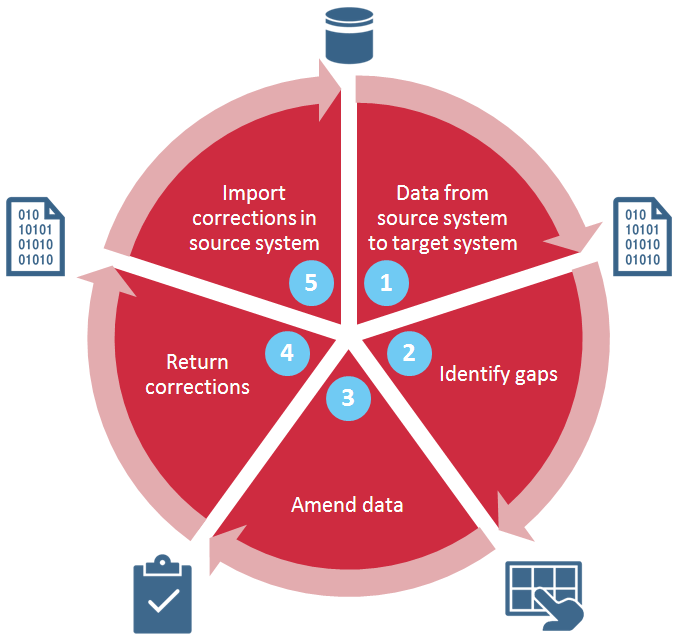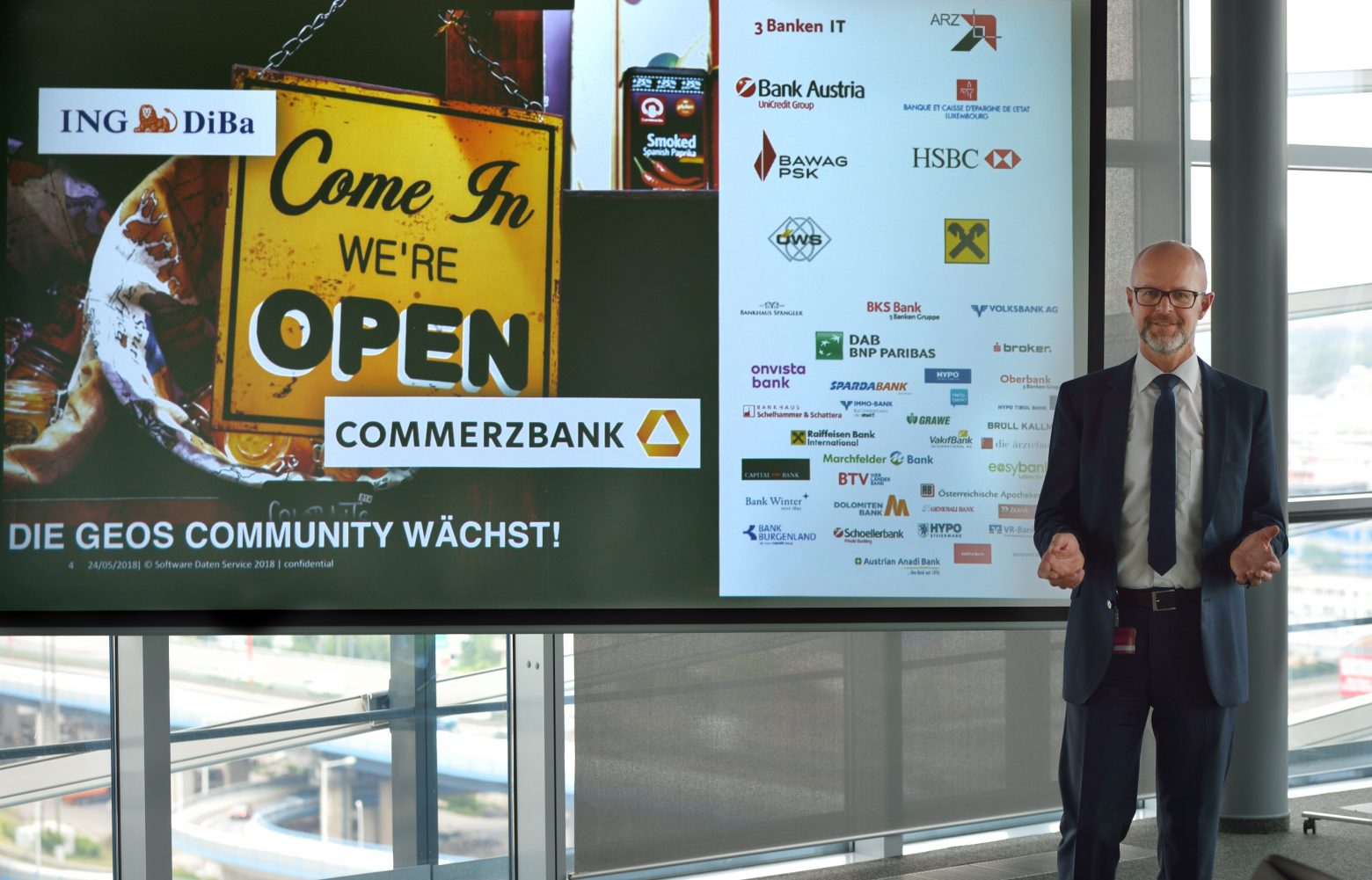The imh Banking Congress KURS, which is held annually in Vienna, was received with great interest also this year. The multifaceted segmentation of the conference into the topics “Compliance & money laundering”, “IT in banking”, “Post-trade settlement & back office”, “Security” and “Payment transactions” attracted a wide audience from many different areas of the banking industry. Once again, SDS was present this year as sponsor and exhibitor at the “Security” conference.
On the first day, the conference started as a plenary assembly with presentations and discussions on current economic and political matters (Brexit, the trade conflict USA/China, the economic situation in Europe as well as the possible merger of Deutsche Bank/Commerzbank).
Initially, the main focus of the KURS 2019 “Security” conference was on the topic “Blockchain”. After presenting basic information and the potential of this technology, the successful productive use of the blockchain platform in the issuing process was illustrated by the example of a blockchain-based open-market credit. The impressive presentation led to lively and interactive communication in the auditorium.
The further course of the first conference day was characterised by information on current legal topics, with the focus on the following items:
- Compliance changes for increasing investor protection and avoiding conflicts of interest
- Research: Handling financial analyses which can affect the market
- Information on the Central Securities Depositories Regulation (CSDR), with the focus on settlement discipline measures for avoiding settlement fails (sanctions, coverage procedure/buy in) as well as the internalised settlement, which obligates banks to report their internal transactions
The first day of the KURS 2019 “Security” conference was concluded with the topic “Robo-advisory”, the digital investment counselling which is an option particularly for retail customers with few liquid assets.
On the second conference day, the EU Shareholder Rights Directive (SHRD) was subject of conversation twice. Currently, the bill “Change of the Securities Supervision Act 2018” is in the appraisal phase in Austria. The productive start is expected for the autumn of 2020. Both the challenges for banks and the expected consequences for customers and investors were examined. The areas data protection and bank secrecy still pose unresolved issues, particularly the saving of shareholder data and the obligatory identification of shareholders by the custodian. The practical implications on the customers are seen critically as well, since an information overflow is expected on the one hand and frequent requests for disclosure of personal data due to the shareholder surveys by the issuers are anticipated on the other hand. The banks will also have to find ways to meet the demands of customers who do not want this kind of information. This contrasts with the advantages of the customers’ extended possibilities of exercising the shareholders’ rights. Some banking representatives expect high costs with doubtful value. From a legal standpoint, the costs may be passed on to the customers, in practice, however, this option is doubted.
Another item on the agenda was the SFTR (Securities Financing Transactions Regulation), which aims to increase the transparency of securities financing transactions. The risks inherent in such financial transactions shall be recognised at an early stage and monitored accordingly. All counterparties whose branch offices are within the EU must report each securities financing transaction as well as each change or termination to a registered or acknowledged trade repository. Moreover, the further use of financial instruments received as collateral is only permitted under certain conditions. The Regulatory Technical Standard (RTS) is currently under review in the EU Parliament and the Council of the European Union. From today’s view, reporting is expected as of 11 April 2020.
In the overview of the recent essential tax innovations, the new procedures for CYT reimbursement, foreign CYT and exchange of securities based on the Kapitalmaßnahmen-VO (Austrian corporate actions regulation) were described. Furthermore, fund taxation in Austria and Germany, the account register, the Common Reporting Standard (CRS) as well as FATCA/QI and IRS 871m were outlined.
The consolidation of TARGET2 and TARGET2-Securities is scheduled for November 2021. It extends liquidity management and effects a separation of central banking operations from RTGS transactions. All of this is based on ISO 20022 and is implemented as a big bang migration. There will be no co-existence with ISO 15022 MT messages. The first customer tests are scheduled from March 2021 onwards.
After that, the Eurosystem Collateral Management System (ECMS), whose goal is the harmonisation and centralisation of the collateral management systems, is scheduled to go live in November 2022. In this context, the strongly fragmented environment of 19 national systems is to be consolidated into one uniform Eurosystem-wide collateral management system. One trigger is the increasing importance of collateral. The standardised messages are exchanged exclusively in ISO 2022 format. Additionally, new standards in the area of triparty and corporate actions will be introduced. The expected benefits are a harmonised settlement of collateral in the Eurosystem, an efficient mobilisation of collateral and another contribution to the establishment of the capital market union.
Our core business fields cover all of these topics for which our products SDS GEOS, SDS IREG, SDS MCOST and SDS CCONFORM offer corresponding solutions.
For SDS GEOS, for instance, we are currently implementing the last requirements for the reporting of internalised settlements as part of CSDR and simultaneously, we are already analysing the requirements for SFTR reporting and SHRD.





